A guest post by the commenter known as Dottoressa. She is a citizen of Zagreb, with a love of fashion, and this is her personal fashion history in context. In light of the bombings in Brussels, we discussed delaying this post, but in the spirit of carrying on, of being undaunted, decided to publish. She sends her thoughts and condolences to the citizens of that beautiful city.
Thank you Lisa for your invitation to be a guest once again at Amid Privilege. This time it will be a journey through the history of fashion in Zagreb.
Before WWI, Zagreb was part of the K and K Habsburg monarchy. It was full of shops, warehouses with almost everything you could think about and a lot of excellent artisans. It was like the little copy of Vienna.
Every lady had her seamstress (and the perfect seamstresses still are most precious persons to find-see Nina Gracia’s book!), her milliner, furrier, shoe and glove makers. Materials for dresses and coats were ordered from Vienna (or sometimes Paris), all kind of silk, velvet, lace…..The quality was superb – my grandmother has saved, luckily, some of her silk materials.
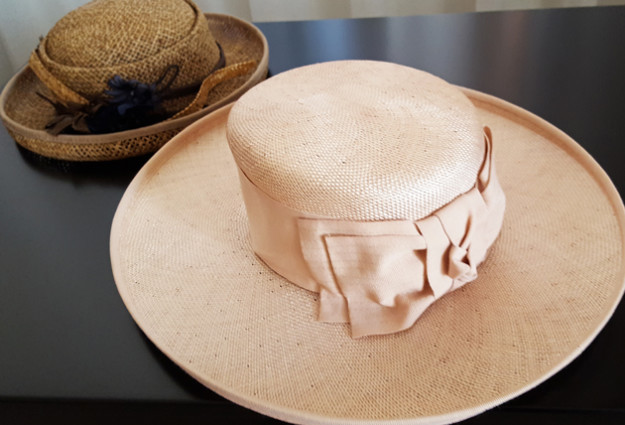
Women in Zagreb were known for their elegance.
From WWI to WWII
We were part of old Yougoslavia, fashion changed, changes were followed, but the elegance and flair were here to stay. After WWII there was a great change. Communists took over the government. All the factories, warehouses, shops, land and a lot of flats and houses were confiscated, nationalized, their owners were mostly prosecuted. Their crime was to have too much wealth (although there were always invented some other reasons). Everything was owned by the State or “People,“ one had only “the right to use it.”
Money lost its value overnight and new banknotes and coins came.
After The War
from 1945, there were shortage problems with almost everything. Food and clothes were restricted and you got a monthly ration card. In 1948, Yougoslav leader Tito broke all connections with Stalin , USSR and Eastern block. He formed later, together with India and Egypt, so called Non-Aligned Movement (Tito-Naser-Nehru initiative). Things slowly, very slowly, got better.
Women were equal (more or less) in Work and Public Affairs (home situation was pretty the same as before) but fashion, beauty, visible symbols of luxury – they were almost illegal and redundant. Comrades had to be clean and work for “higher goals“ of all (or maybe just few), not waste time thinking about make up and hair do.
People somehow managed (women particularly) the best they could. Some things were smuggled, some sent from relatives who lived abroad, some bought from tourists who visited Yougoslavia…..Scarlet was not the only one who used old curtains for a dress (cheers for my granny with her silks!). Coats could be transformed to children’s coats, grandpa’s suit could become granddaughter’s dress.
I Was Born In 1958
As I grew up, stores were, step by step, slowly, again full of beautiful materials, first class cotton from India, silk from China, wool, even camelhair. Foreign magazines, like German Burda, were sent (or brought by economical emigrants who were gradually permitted to go to work in Germany), outfits were copied and our seamstresses (my mother and me inherited ours from my grandmother and when she grew old, we found another, equally good)– who worked at home – applied their magic.
It was “grey economy,’ doing something that the law (in simple terms) “disapproved,” if not strictly forbade. A lot of things here were like in some kind of twilight zone, between legality and illegality,
At the same time, a lot of people with some spare money (could you imagine the situation where you have some money and nothing interesting to buy?) started to buy German currency (DM!) , from tourists or smugglers. We were allowed to travel abroad (even the people like my family who had never joined The Communist Party) and needed foreign money. Shopping one-day trips to Trieste, little Italian town near the border began. Precious marks were very rarely enough for spending a night in a hotel when you could buy another pair of shoes for it.
And shoes always won.

We woke up around 4 AM and drove – my poor father who never bought a thing!- to the border. If customs officers were graceful and the long bee line didn’t have to wait too much, we were in Trieste around 9 AM-time for first cappuccino, bathroom, and making “battle’ plans. After a couple of trips, my mother and me were more familiar with stores in Trieste than in Zagreb, best shoes, bags, jeans…And the plan was: First go around 2-3 best shopping streets, quick decisions, second round and shopping, happiness or bad luck, (if there were not our sizes available at the moment), there was no place for mistakes (you couldn’t come and return next day). During the lunch break we would go for a pizza, second coffee and a little evaluation. If the money was spent or the goals reached, we would go home (and through customs where you might or might not have to pay taxes.)
We usually went twice a year (and a couple years later maybe to Graz, Austria, too), mostly for shoes, bags and jeans. At first it was important to choose quality and the beauty of the items, the softness of the leather, beautiful colours and natural fibres. Later we learned about brand. It was interesting that there was a lot of perfect clothes from small factories who didn’t survived till today. Shoes were Rossi, Rossini, Madras, Frattelli Rossetti…some of the brands were unknown and became popular later, like Furla bags or Fendi.
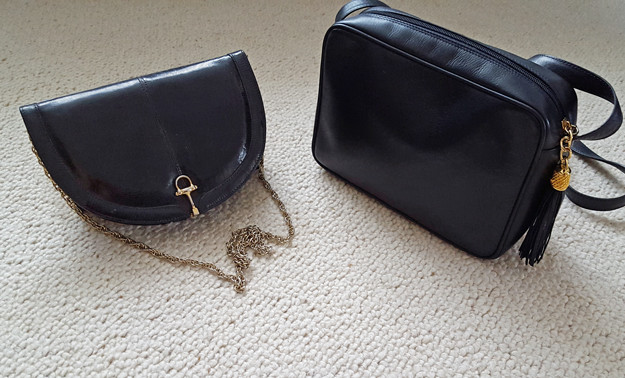
I still remember my first boots, glove-soft tan leather, mid block heel, back zip-beautiful and very expensive, it was only item I have bought this time. I had to sacrifice anything else. I used to just look at them for days before actually wearing them.
And then, there were so many things to catch attention: notebooks, little colourful things of all kind that made one’s heart sing, chocolates, coffee, you name it. Alice in the Wonderland……so many wishes!
I was among the lucky ones, I knew it all the time! A lots of people went to Trieste, but not all of us have this opportunity, the money or willing parents who let you go. I was giving lessons in German and helped in a beauty salon to earn some pocket money too.
What valuable lessons did I learn through this period of life:
-to plan carefully and think about few key pieces in my wardrobe of best quality I could afford
-to know the value of money and to choose among quantity and quality
-to think in advance and make choices quickly
-to experience delayed gratification
-to understand money exchange rates very early in life
And a lot more…..
Years, decades later…..we have a lot of global brands here in Zagreb-let me list some of them: Max Mara (and all daughter brands like Marella and Marina Rinaldi).
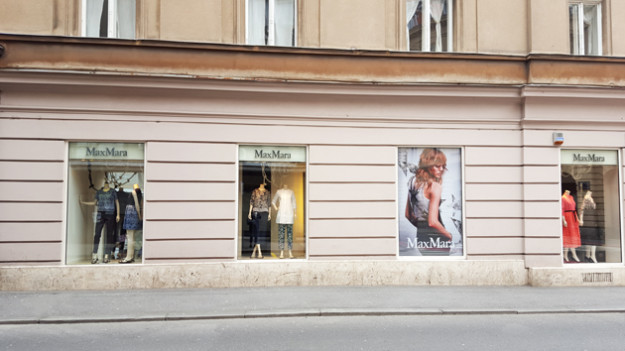
Burberry, Marc Cain, Basler, Palmers, Tommy Hilfiger, Gary Weber, Mephisto, Furla, Lancel…..as flag stores, couple of good concept stores (“Maria” f.e., with stores in Zagreb and Dubrovnik),
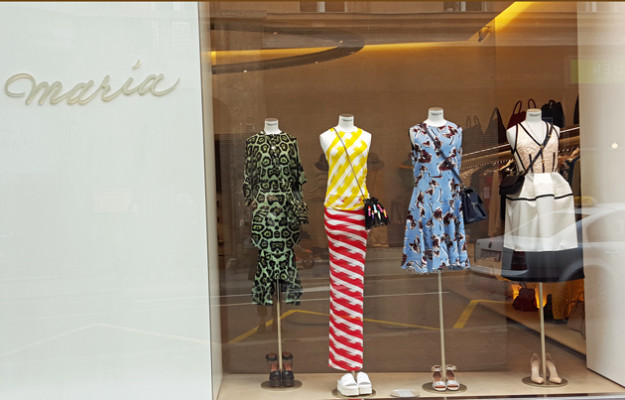
and a lot of retailers like Zara, H&M etc. I am very sorry because we’ve lost Hugo Boss. The prices are higher than abroad.
We now tend to overdress a little, (and it comes with long time deprivation, new money, wives and girfriends of high-profile athletes as everywhere, realities……) or a lot.
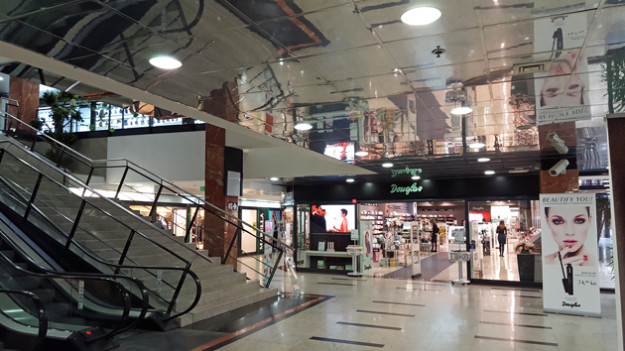
Globalization and online shopping change, of course,the whole concept. There are still original things you can buy in Zagreb but this is the whole new story.
Did you ever had any impossibility (except money) to buy things you wanted?
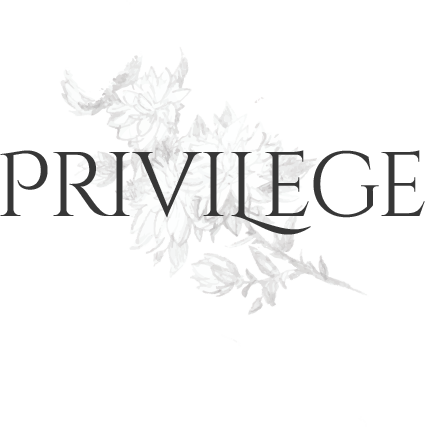
42 Responses
What an interesting post, and a charming voice. Thank you!
@Kathy, Thank you Karhy. So nice to hear
dottoressa
My brother has been to Zagreb…he wants us to go with him soon. Meeting you online has sparked my interest in going!
@Valentine,
Valentine,I hope he enjoyed it and that you’ll visit,too. Zagreb can surprise in a positive way!
Thank you
Dottoressa
Your post has made me realize how much I took for granted when I was young. Younger.
@Linda Pakravan,
We all do (still!) Linda
One realize it only afterwards
Thanks,
Dottoressa
What an interesting “history” lesson from a different perspective…Thank you so much, Dottoressa!
@Margy Houtz,
Thank you Margy for commenting
Dottoressa
I grew up in a small town in the Mid West part of the U.S. It had a shopping area, but not big stores. We would drive several hours to the nearest big that had national shops and go shopping a couple of times a year.
It was similar to what you describe — going someplace you couldn’t easily return anything, zooming through all the shops to survey what was there and then going back to zero in on what you were looking to buy. There was a hamburger place, with limeades and we liked to eat there.
Once you returned home then your purchases were dear, you’d made a special trip to get them.
@RoseAG,
I know exactly how you felt RoseAG! Everything was so precious,more then when you just cross the street to shop,no?
And more beautiful when we were back home,yes :-)
Dottoressa
I too grew up in a small town, several hours from shopping. Opportunities to spend were few, and available funds were limited. I remember the saving and the planning, and how precious those things were, as well as how important to not make frivolous mistakes. Not nearly the same in so many ways, and yet the very fact that things weren’t available, that choices had to be made created a different perspective than that found when one is surrounded by myriad options.
But,now,with a time distance,I could find even some good things about it,don’t you think?
Sometimes is good not to have everything you want,especially at once. But,then ,you have to become wise first :-)
Thank you Mardel for sharing your story
Dottoressa
Thank you for sharing your story – it was very educational and inspiring. I actually think it was a great idea to publish it today as a reminder of the freedoms that we have in the US (and that you now have in Croatia) that others want to take away from us.
@Kate, Thank you Kate -that was exactly our, first Lisa’s and then I agree too,opinion and the reason to go with the post today as planned! And thank you for reminding us all
Dottoressa
This was fascinating. My grandparents came to the U.S. from Budva around 1930 and settled in Arizona. My grandmother’s sister remained in Yugoslavia and I know that my grandmother used to send her things from the U.S. We visited in 1968 – Budva, Dubrovnik, Zagreb. I really only remember Budva.
I was also born in 1958!
Oh Kathleen,this really is a fascinating story! Thank you for sharing it,it is very interesting. A lot of people emigrated from Croatia and,later,Yugoslavia,especially from Adriatic ,many,many people went to USA,Australia and Canada. Budva is so beautiful,and the people ,too (it is now in Montenegro,but there are lot of Croats there,too)
So nice to meet you:-)!
Dottoressa
I loved reading your story. Thank you for sharing it and I’ve always wanted to visit your country.
@Kathy,
I’ve made a mistake,so answer to your comment is below,sorry!
Thank you for sharing your story with us and I think your “lessons learned” are very wise and relevant.
@Bungalow Hostess,
So good to learn it very early,isn’t it?
Thank you !
Thank you Kathy,so nice of you!
I am,of course,not objective, but hope you would visit Croatia and find a lot of things to see and do here
Dottoressa
Thank you for a beautiful post, much appreciated. My grandmothers both lived through WWII in England. One of my gran’s was a seamstress, and yes, I remember the stories of turning big coats into small ones, and making do with very little – money, food and clothing. They both left an indelible mark of how to appreciate the freedoms and wealth we have here in the West now, after living through great privations during the war and afterward, as both became widows at a young age with young families. My mother always loved beautiful things, and they were so rare when she was growing up. Now we are literally drowning in commercialism and debt. Thanks Dotteressa, you made me remember the stories told to me of how women coped. Despite everything, both my grandmothers lived into their nineties and neither would go out without lipstick and powder. Bless you. xxx
@Tracey, Thank you very much! The stories like these about your both grandmothers have to be remembered! We sometimes forget to fast our family history,or history itself. They were brave and proud and carried on despite the difficulties.
I’ve read a lot of books about GB during and after the WWII,but it is,of course,different when your family lived through it.
And I can’t emphasize enough the importance of seamstresses in times like that
Dottoressa
A wonderful guest post — thanks for hosting this, Lisa, and for writing it, of course, Dottoressa! Teaching on a campus with so many international students, I often marveled at how quickly students from so many countries and from every continent came to dress so similarly, and I wondered about the fashion histories in their immediate and more ancestral past.. . And here you offer such a fascinating glimpse into one such history.
As for barriers I’ve faced in buying what I want, beyond money my only experience is what my (quite strict, Catholic) parents allowed when I was in my teens. . . that felt like quite enough frustration at the time, but how minor in retrospect!
@Frances/Materfamilias, Thank you Frances,so kind of you,you always support my english exercises :-),as well as Lisa!
Interesting remark about your students,how they all accept so quickly fashion habits of university environment.
When I was thinking about this post, I remembered when mini skirts or long hair for men were proscribed in the beginning as “capitalist influence”,I remembered newspaper article about first mini skirt in a small city near Zagreb.
How important and frustrated some of our parents demands seemed then…….
Did you write about it somewhere on your blog? Please,send me a link,it seems so interesting
Dottoressa
This was great ! Not just fashion, but history too. BTW, my grandparents lived in Trieste.
@Mary anne, Oh,Mary anne,if I could borow your grandparents then:-) You were luckiest girl in the world!!!
I visited Trieste couple of years ago for the opera-“Anna Bolena”(two days!!!) Trieste is actually beautiful city with both italian and austrian influence,so civilized,near the sea,with old city,great squares,good restaurants and cafes,full of elegant people. I love it for itself now (but must admit that my parents and I visited something except the stores,like Miramare castle or parks.)
The city gained comercially,but we,shopping turists from ex-Yu made it uglier then.
Now,the beauty is more visible
Thanks:-)
Thanks for sharing your story! I very much enjoyed reading it. I think it’s a great reminder to make purchases with care…
@Andrea@WellnessNotes,
Thank you Andrea!
You are so right,it is always reminder for me,how happy I was with only couple of nice things then!
And realize lately that this is so true even now and try to buy less and less
Dottoressa
Well, you forgot to say that the ladies you describe in the period up to WWI are the 1%, and the 99% of women could only look at those hats and silks. And while yes, confiscating businesses and property is and was horrendous and utterly unacceptable, the socialism (not communism!) enabled many, many people, women in particular, to prosper and gain financial independence. I clearly remember visting Zagreb in the 70s and 80s and seeing many beautiful, fashionably dressed women. And my mother and her friends in Ljubljana were far from utalitarian. You make it sound like China. Gosh, I was born in the 60s and my mum had wonderful, high quality, fashionable, even sexy clothes when I was young. Not only from Trieste, but we had Mura, Lisca, Labod in Slovenia and you had other brands too in Croatia. But I do remember that there was a certain type of people who felt only foreign brands would do. I cannot help but feel that your voice is not so much lovely, but more that of a snob. Something I am not used to, coming to this site. But, that is my personal opinion.
Tanja
Dear Tanja!
I am so sorry that you’ve find my post snobish one.
I tried to emphasize that women in Zagreb were always trying to be elegant,all women during all times ( not only when they were going abroad or beeing very rich.) Because elegance or style is much more than money or foreign brands and I was writing of my city(not Split or Ljubljana,not Sarajevo…..)
My last sentence is about original things you could buy in Zagreb ( and I didn’t mean original Chanel but our brands and our artisan’s work)
Hats are mine.-from Zagreb.
My left bag in a picture is from Zagreb bag maker 40 years ago and my suit on the left picture is Estare culto,brand from Zagreb,my green shirt is Labod or something similar. I am so proud that we have such beautiful things that I post these photos and not me in Prada.
It is a post,not my memoirs,I posted before in comments on other blogs good things we had,free education,free medical care,pensions …..
You forgot to mention your lingerie factory Komet,they had beautiful silk underwear.
If I would write about our brands-and yours,too- (and I wear a lot of them,among other,some of my bathing suits are Lisca’s) I would mention our factories and artisans (and we sometimes had to visit Slovenia to buy something from Rasica or Mura)
There were hundred thousands people going to Trieste from ex Yugoslavia. I am only one of them and this is my story!
League of Communists ruled Socialist Yugoslavia- but I never discuss politics,mine or others
Dottoressa
@dottoressa,
I understand. I have to say that I wrote the reply too quickly, without stepping back and it was emotional response. Not nice. I apologise for that. Yes this is your story, and probably just a part of it. Mine might be different, but that was not the place to air it. Sorry.
Tanja
No hard feelings,everything is ok
Everyone of us has her/his own story and opinion,and,yes, this is only a part of mine
Dottoressa
@dottoressa,
Thank you. You know, we live close by and we could actually just as well exchange our experience and opinions over coffee (Emporium in Lj. is nicely stocked at the moment, and Zagreb is always great). And if the excahnge gets too heated, we can always order a bottle of wine. But only after we discuss in detail the latest Lisca and Max Mara collcetions.
Tanja,
some of my very best friends (before,during and after the war) are from or live in Slovenia.
So,all well that’s end well
I am sure that we would have no problems at all
Dottoressa
Dear Lisa,
Thank you for your hospitality,support,kind words and heart! I have great time here and have learned a lot.
Dear readers and commenters at Lisa’s blog,
thank you all for reading and commenting. I am very happy and really grateful.
Happy Easter to you and your dearest,if you celebrate,and a wonderful weekend to all of you
Dottoressa
Dottoressa – Mille grazie for your interesting post, and for your comments to all your readers. I truly appreciated your response to “Mary anne” above, whose grandparents were from Trieste, because I lived there as a child, and my memories of that period are so vivid and so happy. What a great town!
I have visited often since then, and I particularly remember a time in 1984 when I noticed so many more nice shops in the central area, and then several women in our hotel carrying shopping bags from most of them. I learned from a hotel staff member that the shoppers were from Yugoslavia – just as you describe – and how happy many Triestini were to have this good effect on the economy and on the town’s shopping choices.
So I don’t think you need to feel too apologetic about your shopping excursions as something negative for Trieste. (I bought a few things in those new shops myself, so thanks from me, as well!)
@victoire,
Thank you very much Victoire :-) for your kind words
I loved Trieste very much for its beauty and beautiful Italian men and women,always nice,elegant,it was an inspiration for me. The culture,music,architecture,language….and I would be happy to visit it again and again.
Dottoressa
Thank you for your perspective and for sharing your memories, Dottoressa.
Personally, I take so much for granted with regards to clothing and accessories. It is all so readily available and accessible in my life in Australia. I tire of things quickly, move on to the latest trend of the moment, buy things that may or may not last a season.
I’ve never had to actually do without or to go to great extremes to obtain an item of fashion.
You’ve inspired me to treasure what I have and to be content with it.
With love and best wishes
SSG xxx
@Sydney Shop Girl,
Thank you,Sidney Shop Girl for your really nice comment and sharing your opinion!
I still hear small voice in my head talking ” maybe it’s the last chance to find something similar-so buy it!” (because it was true before ) and I try to resist :-)
Have a wonderful weekend
Dottoressa
I grew up in America, the land of plenty. My father made a very good living – over $70K per year which was a lot of money in 1960! However, both my parents grew up during the Great Depression in the 1930’s. Consequently, they were never comfortable spending money.
We lived near Los Angeles while my mother’s relatives lived near Chicago. Every year I would get a big box of used dresses from my cousins in Illinois. Good fabric and still in very good condition but 2 to 5 years out of style and “mid-western” in style. You could tell they were hand-me-downs.
This forced me to learn to sew so that by High School I was quite a good seamstress. In College I studied Biology and Chemistry but also took upper division tailoring classes.
I am too busty to be a real fashionista, but I have learned what colors look best on me and how to dress classically. No longer can afford to shop at Nordstrom’s, Bullocks or Sak’s but you would be surprised what you can find at a good Salvation Army and Assistance League Thrift shop! Sometimes all it takes is a nip-and-tuck, more upscale buttons or a $5 redye job at the local shoe repair.
Not unlike shopping in a post-war zone, just need to know what you can afford, what looks good on you and where to find it. Oh yes, make good decisions and quickly because there are no returns!
Smiles from Charlotte
@Charlotte Des Fleurs,
Dear Charlotte,I am “only” two months late,I am really sorry.
As a new blog reader I didn’t check comments after a couple of days but am so happy to find eventually your story-so interesting ,so true!
If you ever find this answer-thank you very,very much!
Dottoressa